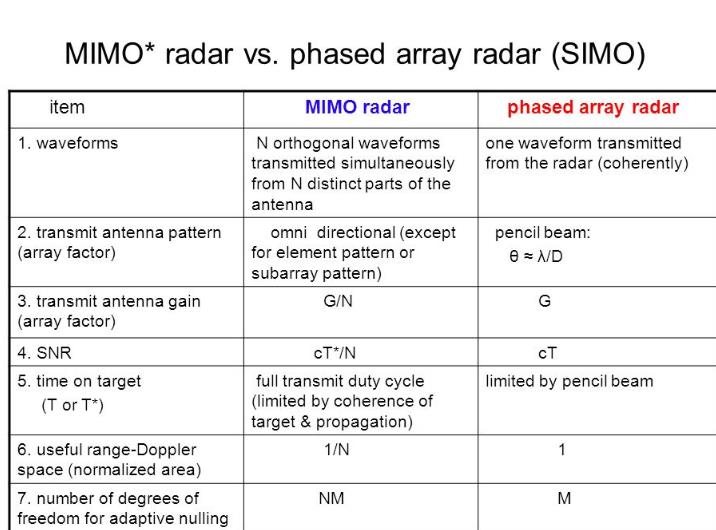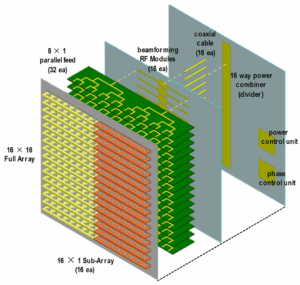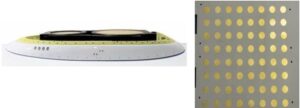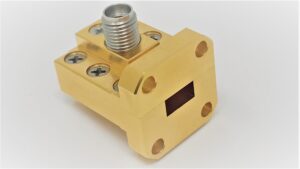Table of Contents
Purpose and Application
MIMO technology — Multiple Input Multiple Output — is used mostly to improve the throughput and reliability of wireless networks, namely to multiply the bandwidth of the datastream. It exploits the nature of electromagnetic waves to reach its goals: with the help of multiple antennas on both devices, the data is divided into several streams, therefore multiplying the capacity of the transmission link. The widespread application of MIMO technology can be observed in typical Wi-Fi routers that now have two or more antennas, which allows the device to communicate with multiple receivers at once.
It means that the total data rate is multiplied by three times, as the Wi-Fi 6 standard doubled on the benefits of both MIMO and the following technology described further below. The process is especially noticeable in modern home environment dynamics when smartphones, tablets, or laptops are used all over the household to stream videos or download large files. With MIMO technology at hand, the total throughput of Wi-Fi routers in such conditions reaches 1 Gbps or even more.
Array antennas, in their turn, are specialized in providing the most effective data transmission and reception possible thanks to radio beams targeted directly at the destination. In other words, the term is applied to the specific purpose and detection systems, mainly radars, safe-navigation systems, and others. Hence, some of the array antennas are applied in radars in aviation that ensure thorough tracking of aircraft all over the world. When the aircraft is further than 300 kilometers away from the radar, the antennas are aimed into narrow beams that provide a clear view of the path and exact location of the target.
In such a way, the application of array antennas due to the fact of their control over the direction of beams gives the possibility to track and monitor aircraft in completely unregulated areas of airspace. Similar technologies are used for aircraft landing and sea radar systems crucial both for safe seashore navigation and fishing. Some ground stations also make use of array antennas that adjust beams in order to provide communication with any satellite that flies over the station. Any signal loss may be disastrous for the safety of spacecraft or the effectiveness of the global satellite communication network that is used by television companies, therefore, the use of adjustable array antennas in modern networks is essential.
These two technologies are vital in modern wireless networks for the potency of their application in specific technical conditions. Both MIMO and array antennas help to further advanced network technologies by providing better control over signal strength and accuracy of signal!beam focusing needed to meet the requirements of next-gen 5G networks.

Signal Processing
MIMO technology has a profound benefit to the signal processing capabilities of wireless communication systems. Through utilization of complex algorithms, data streams are harnessed by a number of antennas. This method is complex enough to make use of one of the most efficient techniques provided by this setup, allowed by the existence of the number of data streams. In this type of signal processing, the spatial multiplexing is enabled, and that means that the multiple datum packets can be sent through different antennas at the same time. That effectively multiplies the amount of data that can be processed at once.
For a 4×4 (four antennas on both the receiving and transmitting sides) MIMO, the signal can multiply the potential data rate by up to one dozen if the signal is strong enough at the right place and at the right time. For practical applications, such as the LTE or Wi-Fi networks, this means significant improvement of speed for data download and by association, upload. The rates copyrighted by IEEE can reach up to 400 Mbps in standard settings for “hotspot” technology, which is extremely important for the users of bandwidth-heavy applications like live-streaming or online gaming.
The focus of signal processing in a setup with arrays of antennas is on proper adjustment of phase and amplitude of signals passed between each element of the array to properly focus and shape the beaming in space. This function is known as beamforming and in practice this function is run in array antennas by various equipment. For most applications, the direction in space is the location of another receiving antenna. An example of this application is the satellite communication, where the transmitting beam must be directed at a satellite orbiting the Earth at way over 35,786 kilometers above the equator.
For this type of application, the multipath signal must be weakened as little as possible due to the vast distance. The oscillations need to be minimized, and the control by the signal is only possible in as much as to not disrupt the goal of the communication – which is the proper aiming of the beamed signal. For another example, the beam power stays strong for a long time and the refracted beam that reaches the Earth can potentially ruin the signal. This can happen near the equator where the distance the signal travels to the moon would be around the same as that which reaches the Earth via atmospheric refraction. For array antennas, it is imperative to focus the transmitted power to keep it to the target and not let arrive to places where it would only waste the power due to unwanted beaming that could last for a long time. An example of an application of array antennas is in high-speed trading, where such antennas are symmetrically focused on the position of the servers of the desired financial exchange.
The priority of this practice is to remove the biggest variable in transaction times for these high-speed trading firms, which are the paths to the exchange servers via the satellite communication provided by a proper beaming of an array antenna. For this purpose, power loss cannot be tolerated since a fraction of a second in a stock trade can result in an enormous amount of money lost. Thus, the power performance of a properly working array antenna can be of a fraction of a second out of one day. Generally speaking, MIMO signal processing systems maximize data and the channel capacity while the array antennas maximize, by adjusting the power exchange in the waveform, the signal performance and focus in terms of transmission, which is exceeded with the use of array antennas for such applications as satellite communication.
Antenna Configuration
The configuration of antennas in MIMO and array antennas is a critical dimension of their operational functionality and application areas. MIMOs use multiple antennas at both ends, but in this case, too, the antennas do not necessarily have to crowd on a unit. This means that the antennas can be installed at different points and not necessarily covering the same device or facility. By spatially separating the antennas, the MIMO system can exploit different paths from the sender to the receiver through which a radio wave can pass, which means that the signal is more robust and less likely to disappear.
In an urban environment where there are many things to block signals and moving between sender and receiver can take different turns, a smartphone or similar device that supports 4x4_MIMO technology has installed antennas in at least one corner of the device, which the method ensures that at any given time, one antenna has a clear path to the signal generator. In contrast, an array antenna has many signal sources, the antennas operate as a whole to be focused or deflected in a certain direction. This effect cannot be achieved if the individual antennas that make up the array are spread and placed out of order. the antenna element is arrayed linear, being circular, and curved, for example, an air traffic control system using a large circle or a planar array radar in the air with several antennas several kilometers to hundreds. from many to the plane.
MIMO and array antennas take different forms of configuration for different uses. MIMO configuration has the ability to maximize data transfer and robustness under conditions, so it is suitable for wireless routers and mobile devices. Arrays have the ability to provide energy, so it is indispensable in security applications such as aviation, and navigation, which require safe, energy-efficient antennas of array antennas, in addition to the flights above applications, also require safety.. of construction… The profound reality that the related choices also guide important characteristics of the two alternative antennas is clear: such as size, power consumption, and cost..
Spatial Efficiency
MIMO technology is well known for its ability to make spatial use more efficient in wireless communication systems. MIMO technology, which employs several antennas to transmit and receive numerous data signals can enable the use of the same spatial area, and the greater transmission of more information. This technology is particularly useful when the spectrum is a constrained resource. For example, in men’s dense urban areas, much more wireless traffic can cater simultaneously thanks to MIMO. In a typical 4×4 MIMO arrangement used in urban cellular networks, operators often offer data speed increased fourfold to 300 Mbps for each user, when usually the speed is limited to 75 Mbps in the other methods. The disparity is important not only in terms of user satisfaction, but also in terms of cost per megabyte information being reduced, leading to an increase in the economic productivity rate of the network.
Array antennas, even though also using multiple antennas, focus on efficiency application in terms of spatial use by sending energy to specific targets. This means that the waste of side loesses is minimized when using an array antenna and the total area covered or in radars, signs that it is detected is maximized. For example, in weather radars, thanks to phased array radars, it is possible to detect objects as small as 2 cm at distances up to 250 km. Being able to direct the beam narrowly allows the realization of this sharp avidity, which is crucial in weather forecasting, which requires knowing where, what type of precipitation consisting of snow, rain, sand, hail etc., is located and where it is moving.
These examples show how MIMO and array antennas differ in terms of the use of efficiency due to spatial changes. In commercial telecommunications, data sent over a given area and the number of users who do so in that area can be maximized during use, while in defense, aviation and tracking applications related to weather, the objects to be followed due to their movement are transmitted over a given area and the application of the efficiency of the apparatus in question, which allows this number to be maximized. Thus, each is reflected in the use of the specific apparatus in question, in decisions regarding network, investment, and system by volume.

Beamforming
Beamforming is a MIMO and/or arrays signal processing procedure used to control the radio waves’ transmission and reception. For instance, in MIMO systems, the beamforming is used to provide users with the better signal “by directing the transmission in the line of sight with respect to the user device,” instead of distributing the signal uniformly in all directions. Such a change in the signal’s direction not only increases the data rate, but also reduces the interaction between separate devices. In a more practical way, it could benefit home users, whose wireless home Wi-Fi network uses MIMO with beamforming: once it is running and acquiring the signal, they could experience increased download speed and, thus, a reduced ping.
At the same time, in arrays, the beamforming’s purpose is to “achieve high precision in directing the beams” for, say, some applications where the emission of radio waves in some specific direction or within some angle is required. In this case, the array antenna, whose elements are emitting the waves, could control the direction and shape of the beam “by feeding each antenna element with a different phase and/or amplitude,” which is adjusted by the signals’ phase and amplitude. Such beams’ uniforms could be used, for example, for applications such as aircraft location via radar. The highlighted applications require controlling precise beams and focusing them on a potentially dangerous target, e.g. an unstopped aircraft with monitoring systems on board.
The dynamics of the moving aircraft is very high, and the systems should be able to track a potentially large number of objects with such speed, which is thousands of kilometers per hour. The array antenna signals’ beams could be constantly adjusted to form a uniform coverage in all directions all along the range between the transmission point and the aircraft. While, in the situation with high dynamics it could differ notably between the initial transmission point, which may be a satellite, a space station, or an aircraft itself, and the destination, which in the best case scenario is just the edge of the object’s main range. Such tracking would not be possible with the mechanically steered array antennas not only because having mechanical elements with high dynamic characteristics would be cumbersome, but also because even on the aircraft such elements still would not be able to compare mechanically in their dynamics with the aircraft in the air.
Use in Different Technologies
MIMO technology has been embedded in the design of contemporary wireless communication systems such as WiFi or cellular networks. The use of multiple antennas allows these systems to send and receive increased amounts of data simultaneously, subsequently boosting network performance. For example, MIMO in WiFi routers can be related to consumers’ need for facilitating many high-bandwidth connections at once. This is especially important for any modern household as it can contain multiple streaming devices, gaming consoles, and smart gadgets. A usual MIMO router would be able to handle streaming videos and playing games online, while the user is downloading large files on his or her laptop or workstation.
This ensures that all devices maintain low or no lag at all. As a rule, current cellular networks, primarily driven by the need to implement 5G technology, are incapable of achieving high data rates and maintaining network reliability. MIMO allows for a high degree of base station efficiency as cellular towers can handle more simultaneous connections. Thus, the throughput upsurge and latency reduction are achieved with the help of MIMO systems. Currently, 5G networks can support a theoretical peak data rate of 20 Gbps, allowing for connecting one million devices for every square kilometer.
Array antennas are mainly applied in areas where the extreme control of the beam’s precision is needed. The applications evidencing such necessity include radars and satellite communication. In terms of the former, weather radars can be cited as an example of the use of phased array antennas that allow meteorologists to promptly steer the radar beam. This can help them track severe weather patterns, providing early warning data. In turn, in the latter, array antennas are used to ensure that one can communicate with the satellite continuously, despite the satellite’s movements, relative to the ground station.
This is especially important for global broadcasting and emergency communications, where the signal needs to be stable and strong all the time. In this way, the applications of these two types of antennas in various types of technology ensure their special optimization and improvement performance according to the context in which they are operated. Thus, MIMO increases data rates and improves connectivity in volatile user-centric environments. Alternatively, array antennas are critical to more static applications, which are high-stakes and require extreme precision in ensuring a connection or tracking a target.







